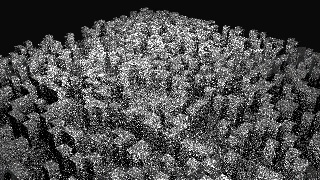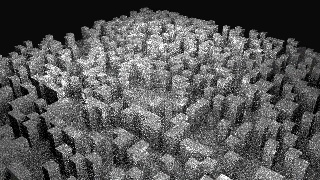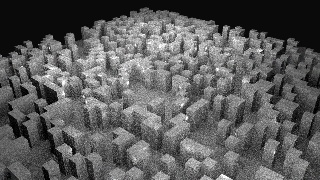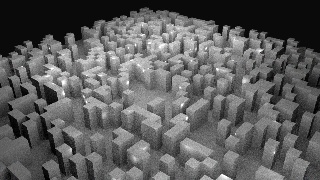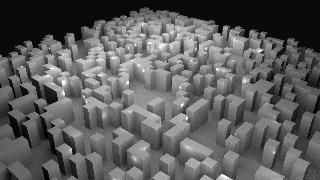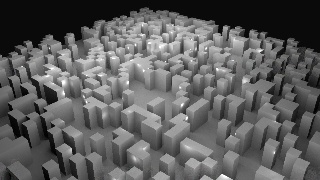...
Notes About Sampling Parameters
Arnold
3Delight
RenderMan
Results - RMSE
Arnold
| Samples | 2 (1.23) | 4 (4.91) | 8 (19.64) | 16 (78.56) | 32 (314.29) | 64 (1257.18) |
|---|---|---|---|---|---|---|
| Image | ||||||
| Time | 1s | 2s | 6s | 21s | 1:21 | 8:12 |
| Shadow Rays | 0.678 M | 3.26 M | 10.8 M | 43.4 M | 173.6 M | 694.5 M |
| RMSE | 0.15699 | 0.100115 | 0.0501787 | 0.0242515 | 0.0117413 | 0.00693426 |
...
|
Results - Scalability
For this test we will render 3 images that have a similar RMSE in all renderers but with a much higher area light count. We increase the Tube Per Step to 200 (10 times more area lights) and re-time the results.
Preliminary Conclusions (for self, re-wording needed)
- 3Delight generates light samples that are significantly algorithmically better than both Arnold and PrmanRenderMan.
- 3Delight is slower to to generate these samples. Meaning that for draft renders Arnold/PrMan will seem faster. For final renders 3Delight becomes increasingly faster.
- Using so much less samples also makes 3Delight faster when shading is more expensive
- RenderMan seems to have difficulties in sampling.
- Arnold has a solid albeit O(N^2) algorithm (vs O(N) in 3Delight) and compensates to a certain degree with very fast light sampler.
- When combining BRDFs, 3Delight is even less noisy.
...
